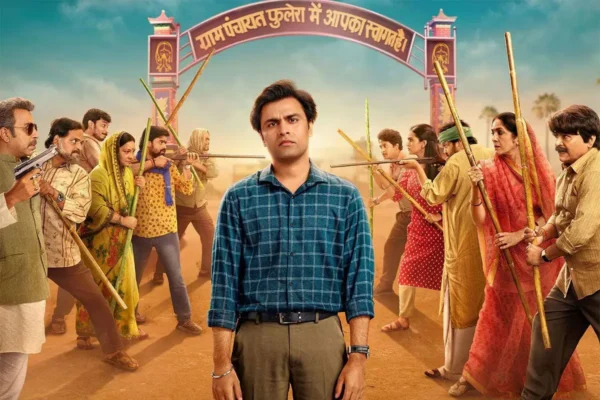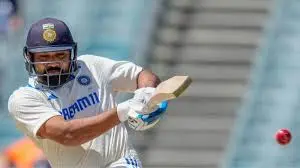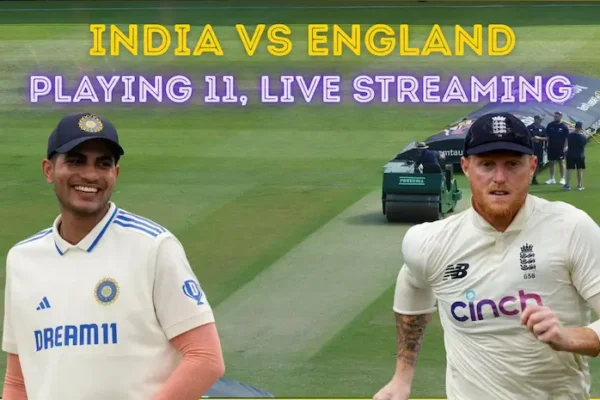

Should Rohit Sharma Say Goodbye Before Sydney Test? A Closer Look at the Debate
Melbourne: Rohit Sharma performance in the ongoing Border-Gavaskar Trophy (BGT) has drawn sharp criticism, raising questions about whether the Indian skipper should bow out before the Sydney Test. With just 31 runs in three Tests across five innings, Rohit’s form has been abysmal. Comparatively, Jasprit Bumrah has claimed 30 wickets in the same series, a statistic that has turned into fodder for social media memes but underscores a larger issue—Rohit’s dwindling impact as a Test batter.
This performance slump is not just a personal setback but also reflective of a captain struggling to lead effectively in the longest format. While Rohit has shown flashes of tactical acumen, his extended lean patch has visibly affected his decision-making on the field. The loss at the Melbourne Cricket Ground (MCG), after rain salvaged a draw for India in Brisbane, has intensified calls for change, with the World Test Championship (WTC) Final now out of reach.
A Career at a Crossroads
Conversations with the BCCI top brass and selectors indicate that Rohit Sharma is contemplating retirement from Test cricket. While the official announcement is pending, sources suggest that Rohit Sharma has already decided to step down after the Sydney Test, marking the end of his red-ball career. However, this raises a more pressing question: does Rohit Sharma deserve to play his farewell game, or should the team prioritize merit over sentiment?
In 2024, Rohit Sharma Test average has been in the mid-20s, with just two centuries and two half-centuries in 14 matches. His tally of 619 runs over this period would have seen any other batter dropped from the setup. Yet, as captain and a player of significant reputation, Rohit has been afforded a longer leash. This leniency, however, has come at the expense of team performance and the opportunities for the next generation of cricketers.
Tactical Missteps and Missed Opportunities
The experiments in Melbourne only compounded India’s woes. Rohit Sharma decision to open the batting, KL Rahul’s placement at No. 3, and Shubman Gill being relegated to the bench disrupted the team’s balance. While KL Rahul struggled in an unfamiliar role, Shubman Gill’s exclusion denied the team a chance to capitalize on his promising starts earlier in the series. If Rohit Sharma plays in Sydney, this batting order is likely to persist, potentially sending Gill home with just three innings under his belt—two of which hinted at his potential.
This scenario is emblematic of a larger issue: delaying the transition to a younger core of players. For India, the smooth integration of emerging talent is as important as managing the exit of stalwarts. Australia, for instance, has historically handled retirements seamlessly, ensuring minimal disruption to team dynamics. India, however, has often struggled with this process.

Lessons from the Past
A decade ago, MS Dhoni set a precedent for graceful leadership transition. Recognizing the need for fresh energy and ideas, Dhoni retired midway through a series, handing over the reins to Virat Kohli. This move not only ensured continuity but also allowed the team to rebuild under a new leader without unnecessary distractions.
Rohit now faces a similar decision. Will he step aside immediately, allowing the team to focus on the future, or will he wait for the inevitable chorus of criticism to grow louder? While a farewell Test might seem fitting for a player of Rohit’s stature, the long-term interests of Indian cricket must take precedence.
Beyond Sentimentality
Cricket, particularly in a country like India, often treads a fine line between sentimentality and pragmatism. Rohit Sharma contributions to Indian cricket—both as a batter and a leader—are undeniable. However, Test cricket demands ruthlessness in decision-making, especially when it comes to team composition. Playing Rohit in Sydney for sentimental reasons risks compromising the development of players like Shubman Gill, who represent the future of Indian cricket.
Selectors, too, must shoulder their share of responsibility. The onus is on them to facilitate a smooth transition, ensuring that the next generation is not left waiting in the wings for too long. In doing so, they must strike a balance between honoring a stalwart’s contributions and prioritizing the team’s immediate and long-term needs.
The Road Ahead
The Sydney Test offers an opportunity for India to recalibrate. Whether or not Rohit takes the field, the team must begin laying the groundwork for the future. Players like Shubman Gill and KL Rahul need clearly defined roles, and the leadership group must chart a path forward that aligns with India’s evolving cricketing landscape.
As Rohit Sharma prepares for what is likely to be his final Test, the focus must shift from individual milestones to collective progress. His departure, whenever it happens, should be a stepping stone for the team, not a stumbling block. For Indian cricket, the end of Rohit’s Test career should mark the beginning of a new era—one defined by bold decisions, seamless transitions, and an unwavering commitment to excellence.







Your point of view caught my eye and was very interesting. Thanks. I have a question for you.
Thank you for your sharing. I am worried that I lack creative ideas. It is your article that makes me full of hope. Thank you. But, I have a question, can you help me?
Can you be more specific about the content of your article? After reading it, I still have some doubts. Hope you can help me.
Thank you for your sharing. I am worried that I lack creative ideas. It is your article that makes me full of hope. Thank you. But, I have a question, can you help me?
Your article helped me a lot, is there any more related content? Thanks!
Can you be more specific about the content of your article? After reading it, I still have some doubts. Hope you can help me.
I don’t think the title of your article matches the content lol. Just kidding, mainly because I had some doubts after reading the article.
Thank you for your sharing. I am worried that I lack creative ideas. It is your article that makes me full of hope. Thank you. But, I have a question, can you help me?
Your point of view caught my eye and was very interesting. Thanks. I have a question for you.
Can you be more specific about the content of your article? After reading it, I still have some doubts. Hope you can help me.
Can you be more specific about the content of your article? After reading it, I still have some doubts. Hope you can help me.
Great blog right here! You seem to put a significant amount of material on the site rather quickly.
whoah this weblog is wonderful i like reading your articles. Keep up the good paintings! You already know, many people are looking around for this information, you can help them greatly.
Are grateful for this blog post, it’s tough to find good information and facts on the internet
Well, I don’t know if that’s going to work for me, but definitely worked for you! 🙂 Excellent post!
Hey, I simply hopped over to your website by way of StumbleUpon. No longer one thing I’d normally learn, but I preferred your thoughts none the less. Thanks for making one thing worth reading.
I think I will become a great follower.Just want to say your post is striking. The clarity in your post is simply striking and i can take for granted you are an expert on this subject.
Are the issues really as complex as they seem?
Tham gia game Luck8 ngay! Cá cược đỉnh cao, nổ thưởng khủng, giao dịch siêu tốc. Nhà cái uy tín, trải nghiệm mãn nhãn cùng ưu đãi siêu hời!
If wings are your thing, Tinker Bell’s sexy Halloween costume design is all grown up.
Our community leaders need to read this, and look at developing some of your recommendations.
It’s time for communities to rally.
Transform your interiors with copper effect tiles, the perfect blend of style and durability. Our copper effect bathroom tiles bring spa-like warmth and elegance to wet areas, while the robust copper effect floor tiles add an industrial yet luxurious touch to living spaces. Crafted from premium porcelain, these copper look porcelain tiles capture the rich, oxidised beauty of real metal with all the benefits of easy maintenance, stain resistance, and long-lasting performance. Available in a striking 60×120 copper floor tiles format, they create a seamless, contemporary look with minimal grout lines, making them an ideal choice for modern homes and commercial projects alike.
Its wonderful as your other blog posts : D, regards for putting up.
I want to see your book when it comes out.
mm88 là sân chơi cá cược đẳng cấp hàng đầu Châu Á. Sở hữu kho game trực tuyến đa dạng từ: xổ số, casino, thể thao,… Tải App để tham gia trải nghiệm mượt …
I don’t think the title of your article matches the content lol. Just kidding, mainly because I had some doubts after reading the article.
Woh I enjoy your content , saved to bookmarks!
I encountered your site after doing a search for new contesting using Google, and decided to stick around and read more of your articles. Thanks for posting, I have your site bookmarked now.
Thanks for your patience and sorry for the inconvenience!
Great post. Just a heads up – I am running Ubuntu with the beta of Firefox and the navigation of your blog is kind of broken for me.
Well, I don’t know if that’s going to work for me, but definitely worked for you! 🙂 Excellent post!
I think it is a nice point of view. I most often meet people who rather say what they suppose others want to hear. Good and well written! I will come back to your site for sure!
Hello there, You have done an incredible job. I will certainly digg it and personally recommend to my friends. I am sure they will be benefited from this site.
Just stumble upon your blog from from time to time. nice article
I’ll check back after you publish more articles.
WoW decent article. Can I hire you to guest write for my blog? If so send me an email!
Woh I enjoy your content , saved to bookmarks!
If you are looking to post free classifieds in India online, we highly recommend Xpdea Classifieds. Xpdea is India’s leading free online ads posting site.
Do you offer workshops?
If you are looking to post free classifieds in India online, we highly recommend Xpdea Classifieds. Xpdea is India’s leading free online ads posting site.
If you are looking to post free classifieds in India online, we highly recommend Xpdea Classifieds. Xpdea is India’s leading free online ads posting site.